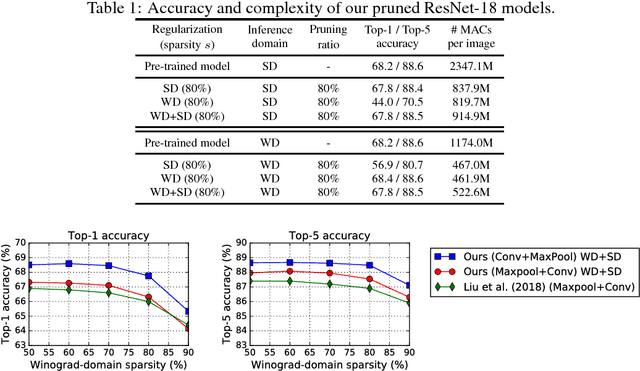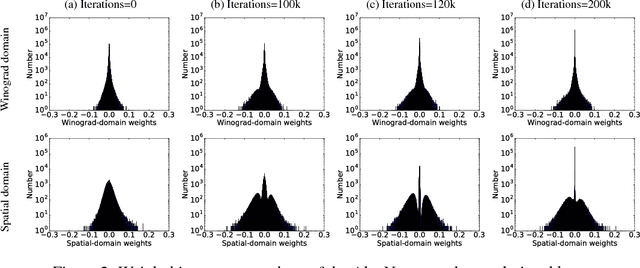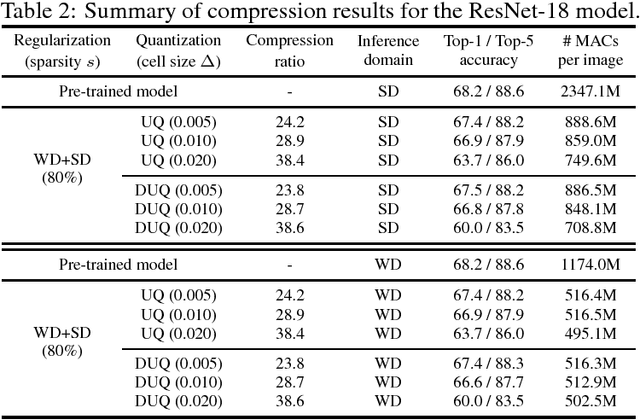Yoojin Choi
A GPT-based Decision Transformer for Multi-Vehicle Coordination at Unsignalized Intersections
Oct 08, 2024Abstract:In this paper, we explore the application of the Decision Transformer, a decision-making algorithm based on the Generative Pre-trained Transformer (GPT) architecture, to multi-vehicle coordination at unsignalized intersections. We formulate the coordination problem so as to find the optimal trajectories for multiple vehicles at intersections, modeling it as a sequence prediction task to fully leverage the power of GPTs as a sequence model. Through extensive experiments, we compare our approach to a reservation-based intersection management system. Our results show that the Decision Transformer can outperform the training data in terms of total travel time and can be generalized effectively to various scenarios, including noise-induced velocity variations, continuous interaction environments, and different vehicle numbers and road configurations.
PPG to ECG Signal Translation for Continuous Atrial Fibrillation Detection via Attention-based Deep State-Space Modeling
Sep 27, 2023Abstract:An electrocardiogram (ECG or EKG) is a medical test that measures the heart's electrical activity. ECGs are often used to diagnose and monitor a wide range of heart conditions, including arrhythmias, heart attacks, and heart failure. On the one hand, the conventional ECG requires clinical measurement, which restricts its deployment to medical facilities. On the other hand, single-lead ECG has become popular on wearable devices using administered procedures. An alternative to ECG is Photoplethysmography (PPG), which uses non-invasive, low-cost optical methods to measure cardiac physiology, making it a suitable option for capturing vital heart signs in daily life. As a result, it has become increasingly popular in health monitoring and is used in various clinical and commercial wearable devices. While ECG and PPG correlate strongly, the latter does not offer significant clinical diagnostic value. Here, we propose a subject-independent attention-based deep state-space model to translate PPG signals to corresponding ECG waveforms. The model is highly data-efficient by incorporating prior knowledge in terms of probabilistic graphical models. Notably, the model enables the detection of atrial fibrillation (AFib), the most common heart rhythm disorder in adults, by complementing ECG's accuracy with continuous PPG monitoring. We evaluated the model on 55 subjects from the MIMIC III database. Quantitative and qualitative experimental results demonstrate the effectiveness and efficiency of our approach.
Zero-Shot Learning of a Conditional Generative Adversarial Network for Data-Free Network Quantization
Oct 26, 2022


Abstract:We propose a novel method for training a conditional generative adversarial network (CGAN) without the use of training data, called zero-shot learning of a CGAN (ZS-CGAN). Zero-shot learning of a conditional generator only needs a pre-trained discriminative (classification) model and does not need any training data. In particular, the conditional generator is trained to produce labeled synthetic samples whose characteristics mimic the original training data by using the statistics stored in the batch normalization layers of the pre-trained model. We show the usefulness of ZS-CGAN in data-free quantization of deep neural networks. We achieved the state-of-the-art data-free network quantization of the ResNet and MobileNet classification models trained on the ImageNet dataset. Data-free quantization using ZS-CGAN showed a minimal loss in accuracy compared to that obtained by conventional data-dependent quantization.
Toward Sustainable Continual Learning: Detection and Knowledge Repurposing of Similar Tasks
Oct 11, 2022



Abstract:Most existing works on continual learning (CL) focus on overcoming the catastrophic forgetting (CF) problem, with dynamic models and replay methods performing exceptionally well. However, since current works tend to assume exclusivity or dissimilarity among learning tasks, these methods require constantly accumulating task-specific knowledge in memory for each task. This results in the eventual prohibitive expansion of the knowledge repository if we consider learning from a long sequence of tasks. In this work, we introduce a paradigm where the continual learner gets a sequence of mixed similar and dissimilar tasks. We propose a new continual learning framework that uses a task similarity detection function that does not require additional learning, with which we analyze whether there is a specific task in the past that is similar to the current task. We can then reuse previous task knowledge to slow down parameter expansion, ensuring that the CL system expands the knowledge repository sublinearly to the number of learned tasks. Our experiments show that the proposed framework performs competitively on widely used computer vision benchmarks such as CIFAR10, CIFAR100, and EMNIST.
Dual-Teacher Class-Incremental Learning With Data-Free Generative Replay
Jun 17, 2021



Abstract:This paper proposes two novel knowledge transfer techniques for class-incremental learning (CIL). First, we propose data-free generative replay (DF-GR) to mitigate catastrophic forgetting in CIL by using synthetic samples from a generative model. In the conventional generative replay, the generative model is pre-trained for old data and shared in extra memory for later incremental learning. In our proposed DF-GR, we train a generative model from scratch without using any training data, based on the pre-trained classification model from the past, so we curtail the cost of sharing pre-trained generative models. Second, we introduce dual-teacher information distillation (DT-ID) for knowledge distillation from two teachers to one student. In CIL, we use DT-ID to learn new classes incrementally based on the pre-trained model for old classes and another model (pre-)trained on the new data for new classes. We implemented the proposed schemes on top of one of the state-of-the-art CIL methods and showed the performance improvement on CIFAR-100 and ImageNet datasets.
Data-Free Network Quantization With Adversarial Knowledge Distillation
May 08, 2020



Abstract:Network quantization is an essential procedure in deep learning for development of efficient fixed-point inference models on mobile or edge platforms. However, as datasets grow larger and privacy regulations become stricter, data sharing for model compression gets more difficult and restricted. In this paper, we consider data-free network quantization with synthetic data. The synthetic data are generated from a generator, while no data are used in training the generator and in quantization. To this end, we propose data-free adversarial knowledge distillation, which minimizes the maximum distance between the outputs of the teacher and the (quantized) student for any adversarial samples from a generator. To generate adversarial samples similar to the original data, we additionally propose matching statistics from the batch normalization layers for generated data and the original data in the teacher. Furthermore, we show the gain of producing diverse adversarial samples by using multiple generators and multiple students. Our experiments show the state-of-the-art data-free model compression and quantization results for (wide) residual networks and MobileNet on SVHN, CIFAR-10, CIFAR-100, and Tiny-ImageNet datasets. The accuracy losses compared to using the original datasets are shown to be very minimal.
Variable Rate Deep Image Compression With a Conditional Autoencoder
Sep 11, 2019



Abstract:In this paper, we propose a novel variable-rate learned image compression framework with a conditional autoencoder. Previous learning-based image compression methods mostly require training separate networks for different compression rates so they can yield compressed images of varying quality. In contrast, we train and deploy only one variable-rate image compression network implemented with a conditional autoencoder. We provide two rate control parameters, i.e., the Lagrange multiplier and the quantization bin size, which are given as conditioning variables to the network. Coarse rate adaptation to a target is performed by changing the Lagrange multiplier, while the rate can be further fine-tuned by adjusting the bin size used in quantizing the encoded representation. Our experimental results show that the proposed scheme provides a better rate-distortion trade-off than the traditional variable-rate image compression codecs such as JPEG2000 and BPG. Our model also shows comparable and sometimes better performance than the state-of-the-art learned image compression models that deploy multiple networks trained for varying rates.
Wyner VAE: Joint and Conditional Generation with Succinct Common Representation Learning
May 27, 2019



Abstract:A new variational autoencoder (VAE) model is proposed that learns a succinct common representation of two correlated data variables for conditional and joint generation tasks. The proposed Wyner VAE model is based on two information theoretic problems---distributed simulation and channel synthesis---in which Wyner's common information arises as the fundamental limit of the succinctness of the common representation. The Wyner VAE decomposes a pair of correlated data variables into their common representation (e.g., a shared concept) and local representations that capture the remaining randomness (e.g., texture and style) in respective data variables by imposing the mutual information between the data variables and the common representation as a regularization term. The utility of the proposed approach is demonstrated through experiments for joint and conditional generation with and without style control using synthetic data and real images. Experimental results show that learning a succinct common representation achieves better generative performance and that the proposed model outperforms existing VAE variants and the variational information bottleneck method.
Jointly Sparse Convolutional Neural Networks in Dual Spatial-Winograd Domains
Feb 21, 2019



Abstract:We consider the optimization of deep convolutional neural networks (CNNs) such that they provide good performance while having reduced complexity if deployed on either conventional systems with spatial-domain convolution or lower-complexity systems designed for Winograd convolution. The proposed framework produces one compressed model whose convolutional filters can be made sparse either in the spatial domain or in the Winograd domain. Hence, the compressed model can be deployed universally on any platform, without need for re-training on the deployed platform. To get a better compression ratio, the sparse model is compressed in the spatial domain that has a fewer number of parameters. From our experiments, we obtain $24.2\times$ and $47.7\times$ compressed models for ResNet-18 and AlexNet trained on the ImageNet dataset, while their computational cost is also reduced by $4.5\times$ and $5.1\times$, respectively.
Compression of Deep Convolutional Neural Networks under Joint Sparsity Constraints
Oct 29, 2018



Abstract:We consider the optimization of deep convolutional neural networks (CNNs) such that they provide good performance while having reduced complexity if deployed on either conventional systems utilizing spatial-domain convolution or lower complexity systems designed for Winograd convolution. Furthermore, we explore the universal quantization and compression of these networks. In particular, the proposed framework produces one compressed model whose convolutional filters can be made sparse either in the spatial domain or in the Winograd domain. Hence, one compressed model can be deployed universally on any platform, without need for re-training on the deployed platform, and the sparsity of its convolutional filters can be exploited for further complexity reduction in either domain. To get a better compression ratio, the sparse model is compressed in the spatial domain which has a less number of parameters. From our experiments, we obtain $24.2\times$, $47.7\times$ and $35.4\times$ compressed models for ResNet-18, AlexNet and CT-SRCNN, while their computational cost is also reduced by $4.5\times$, $5.1\times$ and $23.5\times$, respectively.
 Add to Chrome
Add to Chrome Add to Firefox
Add to Firefox Add to Edge
Add to Edge